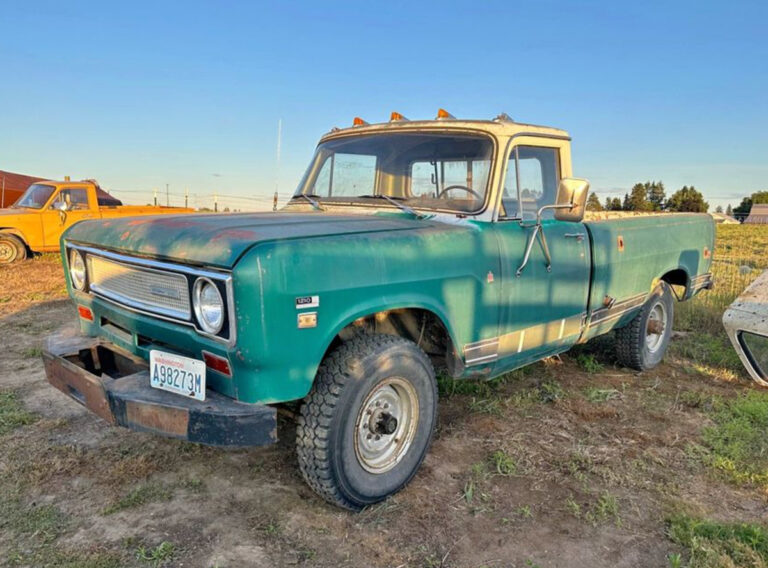Used 2500 Chevy Trucks For Sale: Your Comprehensive Buying Guide
Used 2500 Chevy Trucks For Sale: Your Comprehensive Buying Guide cars.truckstrend.com
The Chevrolet Silverado 2500HD (Heavy Duty) stands as a titan in the pickup truck segment, renowned for its formidable towing capacity, robust construction, and enduring reliability. For those needing a serious workhorse without the hefty price tag of a brand-new model, exploring used 2500 Chevy trucks for sale presents an incredibly compelling option. This comprehensive guide will navigate you through the world of pre-owned Silverado 2500HDs, offering insights, practical advice, and everything you need to make an informed purchase.
Why Choose a Used Chevy Silverado 2500HD?
Used 2500 Chevy Trucks For Sale: Your Comprehensive Buying Guide
Opting for a used Chevy Silverado 2500HD offers a plethora of advantages, making it a smart financial and practical decision for many:
- Exceptional Value: New trucks depreciate significantly the moment they leave the lot. Buying used allows you to bypass this initial depreciation, getting more truck for your money.
- Proven Reliability: The Silverado 2500HD is engineered for demanding tasks, with a reputation for durability. Many older models have proven their mettle over hundreds of thousands of miles, showcasing their longevity.
- Serious Capability: Whether it’s the legendary Duramax diesel or the potent Vortec gasoline engines, these trucks are built to tow and haul. They are ideal for pulling large RVs, horse trailers, heavy equipment, or for commercial applications.
- Established Aftermarket: With decades of production, there’s a vast aftermarket for parts, accessories, and customization options, making maintenance and upgrades easier and often more affordable.
- Variety of Configurations: From basic work trucks (WT) to luxurious High Country trims, and various cab/bed configurations, the used market offers a wide array of choices to fit specific needs and budgets.

Key Generations and What to Look For
The Chevy Silverado 2500HD has evolved through several distinct generations, each with its own characteristics and noteworthy features. Understanding these can help narrow down your search:
- GMT800 (2000-2006): These early HD models laid the groundwork. They feature robust chassis, the venerable 6.0L Vortec V8, the less common but powerful 8.1L Vortec V8, and the introduction of the iconic 6.6L Duramax diesel paired with the Allison transmission. Look for rust on the frame and body, especially in northern climates. Injector issues were more prevalent on early LB7 Duramax engines (2001-2004).
- GMT900 (2007-2014): This generation brought a more refined exterior and interior, improved ride quality, and enhanced safety features. The 6.0L Vortec V8 continued as the standard gas engine, and the Duramax diesel saw improvements (LMM, LML engines) with increased power and efficiency, though later models required Diesel Exhaust Fluid (DEF).
- K2XX (2015-2019): Significant updates included a refreshed exterior, a more modern interior with improved infotainment, and greater emphasis on technology. The 6.0L gasoline engine remained, but the Duramax received further enhancements (L5P engine for 2017+), boasting impressive power and torque figures. These models offer a good balance of modern features and established reliability.
- T1XX (2020-Present): The latest generation features a bold new design, an all-new 6.6L gasoline V8, and an updated 6.6L Duramax diesel with a 10-speed Allison transmission, dramatically increasing towing capabilities. While newer and more expensive, they offer cutting-edge technology and comfort.
When looking at specific generations, consider the trade-off between price, features, and potential maintenance. Older models will be cheaper but may require more immediate attention, while newer used models offer more tech and capability at a higher price point.
The Inspection Process: What to Check Before You Buy
A thorough inspection is paramount when buying any used vehicle, especially a heavy-duty truck that may have endured hard work.
-
Exterior and Frame:
- Rust: Crucial for HD trucks. Check wheel wells, rocker panels, cab corners, and especially the frame rails. Surface rust is common, but deep, flaking, or perforated rust is a red flag.
- Body Damage: Look for misaligned panels, inconsistent paint, or signs of accident repair.
- Tires: Check for even wear, indicating proper alignment. Uneven wear suggests suspension or alignment issues.
- Suspension: Look for sagging, cracked bushings, or fluid leaks around shocks/struts.
-
Under the Hood:
- Fluid Leaks: Check for oil, coolant, power steering, and transmission fluid leaks.
- Engine Sounds: Listen for knocking, ticking, or grinding noises. A healthy engine should idle smoothly.
- Exhaust Smoke: Blue smoke indicates oil burning, white smoke could be coolant, and excessive black smoke (from a diesel) could indicate fueling issues.
- Belts and Hoses: Check for cracks, fraying, or bulging.
- Battery: Look for corrosion around the terminals.
-
Interior:
- Electronics: Test all lights, windows, locks, radio, and HVAC controls.
- Upholstery: Check for rips, tears, or excessive wear.
- Odors: Musty smells can indicate water leaks or mold.
- Dashboard Lights: Ensure no "Check Engine," "ABS," or "Airbag" lights are illuminated after startup.
-
Test Drive:
- Transmission: Shifts should be smooth and predictable, without slipping or harsh jerking.
- Brakes: The pedal should feel firm, and the truck should stop straight without pulling. Listen for grinding or squealing.
- Steering: Should be responsive without excessive play. Listen for clunking noises over bumps.
- Drivetrain (4×4): If equipped, test 4HI and 4LO engagement. Listen for grinding or binding.
- Highway Speeds: Check for vibrations, road noise, and stability at higher speeds.
-
Pre-Purchase Inspection (PPI): This is the single most important step. Have an independent, trusted mechanic perform a thorough inspection. They can identify issues that might be invisible to the untrained eye, potentially saving you thousands in future repairs.
Understanding Vehicle History Reports (CarFax/AutoCheck)
A Vehicle History Report (VHR) is an essential tool. It provides a snapshot of a vehicle’s past, including:
- Accident History: Details on reported accidents, damage severity, and repair estimates.
- Title Brands: Salvage, flood, rebuilt, or odometer rollback titles are major red flags.
- Service History: Records of routine maintenance, oil changes, and repairs. Gaps in service records can be a concern.
- Ownership History: Number of previous owners and how long they owned the truck.
- Recall Information: Unrepaired safety recalls.
Always cross-reference the VHR with your physical inspection. If something in the report doesn’t align with the vehicle’s condition, proceed with caution.
Budgeting and Financing Your Used 2500
The price of a used 2500 Chevy truck can vary wildly based on year, mileage, condition, trim level, engine (gas vs. diesel), and 2WD/4WD.
-
Factors Affecting Price:
- Year and Mileage: Newer trucks with lower mileage command higher prices.
- Engine Type: Duramax diesel models are almost always more expensive than gasoline variants due to their higher initial cost, greater capability, and strong demand.
- Trim Level: A basic WT (Work Truck) will be significantly cheaper than an LTZ or High Country.
- Condition: Excellent condition with a clean history will fetch a premium.
- Location: Prices can vary regionally based on demand and climate (e.g., less rust in southern states).
-
Hidden Costs:
- Insurance: Heavy-duty trucks, especially diesels, can have higher insurance premiums.
- Registration & Taxes: Vary by state.
- Maintenance: Diesels generally have higher maintenance costs (oil changes, fuel filters, DEF) but longer service intervals for some items.
- Potential Repairs: Always budget an emergency fund for unexpected repairs.
-
Financing: Explore options from banks, credit unions, and dealership financing. Get pre-approved if possible to understand your budget and strengthen your negotiation position.
Tips for a Successful Purchase
- Define Your Needs: What will you primarily use the truck for? Towing, hauling, daily driving? This will dictate engine choice, cab configuration, and trim level.
- Set a Realistic Budget: Include the purchase price, taxes, insurance, and a contingency for immediate repairs.
- Research Thoroughly: Look at reviews, common issues for specific model years, and market values.
- Be Patient: The right truck might not appear overnight. Don’t rush into a purchase.
- Negotiate: Always be prepared to negotiate the price. Research comparable sales to know what a fair price is.
- Don’t Fear High Mileage (with caveats): For a well-maintained 2500HD, especially a Duramax, 150,000-200,000 miles is not necessarily a deal-breaker if the service records are impeccable and a PPI is clean.
- Consider Aftermarket Modifications: Some modifications (lift kits, tuners) can be detrimental to longevity if not done correctly. Assess them carefully.
Common Challenges and Solutions
- Rust: A perpetual issue for older trucks in salt-belt regions. Solution: Prioritize trucks from dry climates or those with documented rust prevention. A thorough frame inspection is crucial.
- Higher Diesel Maintenance Costs: Fuel filters, DEF, and larger oil capacities mean higher routine service costs. Solution: Factor this into your budget. Learn basic DIY maintenance to save money.
- Undisclosed Issues: Sellers may not be aware of or may withhold information about problems. Solution: The PPI and VHR are your best defense.
- Finding the Right Configuration: Specific cab/bed/engine combinations can be rare. Solution: Widen your search radius and be prepared to travel.
Used 2500 Chevy Trucks For Sale: Estimated Price Guide
Please note that these are estimated price ranges and can vary significantly based on the truck’s specific condition, mileage, trim level, features, and geographical location. This table serves as a general guideline.
| Model Year Range | Engine Type | Trim Level (Example) | Estimated Price Range (USD) | Key Features/Notes | |
|---|---|---|---|---|---|
| Issue Type | Specific Problem | Symptoms | Typical Repair | Approximate Cost Range (Pre-Owned) | Preventative Measures/Notes |
| Engine (Gas) | Vortec Camshaft/Lifter Issues | Knocking, ticking, misfires, check engine light, reduced power, rough idle. | Lifter/camshaft replacement. | $1,500 – $4,000+ | Regular oil changes with quality oil, using recommended octane fuel. Less common on well-maintained trucks. |
| Intake Manifold Gasket Leaks | Engine running rough, vacuum leaks, coolant loss (internal/external), erratic idle. | Gasket replacement. | $300 – $800 | Use quality coolant, address overheating issues promptly. | |
| Spark Plug/Ignition Coil Issues | Misfires, rough idle, poor fuel economy, check engine light flashing (severe misfire). | Replacement of spark plugs and/or ignition coils. | $150 – $600 | Follow manufacturer’s maintenance schedule for spark plug replacement. | |
| Engine (Diesel) | Duramax Injector Problems (LB7: 2001-2004) | Excessive smoke (white/blue), rough idle, fuel in oil (oil level rising), poor fuel economy, hard starts. | Injector replacement (all 8 often recommended). | $2,000 – $5,000+ | Use high-quality fuel, change fuel filter regularly, avoid cheap fuel additives. This is a known common issue for LB7. |
| Fuel Filter/Fuel Pressure Regulator (FPR) Issues | Loss of power, stumbling, hard starts, check engine light. | Fuel filter replacement, FPR replacement. | $100 – $500 (filter); $400 – $1,200 (FPR) | Adhere to strict fuel filter replacement intervals (every 10-15k miles). Use clean, quality diesel fuel. | |
| Turbocharger Failure | Whining/screeching noise, loss of power, excessive smoke, oil consumption. | Turbocharger replacement. | $1,500 – $4,000+ | Regular oil changes, allow engine to cool down after heavy use (idle for a minute or two before shutdown). | |
| EGR/DPF System Issues (2007.5+ Diesels) | Reduced power, DPF regeneration issues, check engine light, limp mode. | Cleaning or replacement of EGR valve/cooler, DPF regeneration or replacement. | $500 – $3,000+ | Regular highway driving helps DPF regeneration. Avoid excessive idling. | |
| Transmission | Allison Transmission Slipping/Harsh Shifting | Delayed engagement, slipping gears, harsh shifts, warning lights. | Fluid/filter change, solenoid replacement, or full rebuild/replacement. | $200 – $8,000+ (rebuild/replace) | Regular fluid and filter changes (every 50k miles or less for heavy use). Avoid overloading. |
| Drivetrain | 4WD Actuator/Encoder Motor Failure | 4WD not engaging/disengaging, "Service 4WD" light. | Replacement of actuator or encoder motor. | $250 – $800 | Regular exercise of 4WD system (engage a few times a year). |
| Front End Components (Ball Joints, Tie Rods) | Loose steering, clunking noises over bumps, uneven tire wear. | Replacement of worn components. | $400 – $1,500 (per side/axle) | Regular lubrication if applicable, avoid excessive off-roading or large potholes. | |
| Brakes | Warped Rotors/Worn Pads | Pulsation in brake pedal, squealing/grinding noise, reduced braking effectiveness. | Rotor and pad replacement. | $300 – $800 (per axle) | Use quality parts, avoid riding brakes, allow brakes to cool. |
| Electrical | Tail Light/Brake Light Issues (Corrosion) | Lights not working, intermittent issues, trailer light problems. | Cleaning connections, replacing wiring harness or sockets. | $50 – $300 | Inspect regularly, especially if towing. |
| Body/Chassis | Frame Rust/Body Panel Rust | Visible rust, holes, structural weakening. | Rust repair, patch panels, or full body panel replacement. | $500 – $5,000+ (depending on severity) | Regular washing (especially in winter), undercoating, consider trucks from dry climates. |
| Steering Column/Intermediate Shaft Noise | Squeaking or clunking noise when turning the steering wheel. | Lubrication or replacement of intermediate shaft. | $100 – $400 | Less of a functional issue, more of an annoyance. |
Disclaimer: These are general estimates for common issues on used trucks. Actual costs can vary widely based on labor rates, part quality (OEM vs. aftermarket), geographical location, and the specific mechanic/shop performing the work. A pre-purchase inspection is highly recommended to identify specific issues and get accurate repair estimates.
Conclusion
A used 2500 Chevy truck represents an exceptional opportunity to acquire a powerful, capable, and durable heavy-duty pickup without the financial strain of a new purchase. By understanding the different generations, diligently inspecting potential candidates, utilizing vehicle history reports, and budgeting wisely, you can confidently navigate the market. With the right research and a thorough pre-purchase inspection, you’ll be well on your way to finding the perfect workhorse or adventure vehicle that will serve you faithfully for years to come.
Frequently Asked Questions (FAQ)
Q1: Is a used Duramax diesel worth the extra cost over a gasoline 2500?
A1: For heavy towing, long-distance hauling, or frequent commercial use, the Duramax diesel’s superior torque, fuel efficiency (especially under load), and longevity often justify the higher purchase price and maintenance costs. For lighter duty or occasional towing, the gasoline engine is usually more economical.
Q2: What are the best model years for a used 2500 Chevy truck?
A2: There isn’t a single "best" year, as it depends on your budget and desired features.
- Best Value/Workhorse: 2005-2006 (late GMT800) with the LBZ Duramax are highly sought after for their reliability and lack of DEF.
- Modern Features/Capability: 2017-2019 (K2XX) with the L5P Duramax offer significant power and modern amenities.
- Budget-Friendly: Early 2000s models (GMT800) can be very affordable but will likely require more attention to maintenance and rust.
Q3: How much can a used 2500 Chevy truck typically tow?
A3: Towing capacity varies greatly by year, engine, transmission, axle ratio, and configuration (2WD/4WD, cab/bed style).
- Gasoline: Generally ranges from 9,000 lbs to 14,500 lbs.
- Diesel: Typically ranges from 13,000 lbs to over 23,000 lbs (for newer models). Always check the specific truck’s Gross Combined Weight Rating (GCWR) and Gross Vehicle Weight Rating (GVWR) on its door jamb sticker for precise figures.
Q4: What are the most common problems to look for in a used 2500?
A4: Common issues include rust (especially on the frame and body panels), issues with the Duramax fuel injectors (particularly on 2001-2004 LB7 engines), front-end suspension components (ball joints, tie rods), and potential DPF/EGR issues on newer diesels. Always get a pre-purchase inspection.
Q5: Where is the best place to find a good used 2500?
A5: You can find them at new and used car dealerships, online marketplaces (e.g., AutoTrader, CarGurus, Facebook Marketplace, Craigslist), and through specialized truck brokers. Look for private sellers who have detailed service records. Consider expanding your search geographically to find rust-free examples from southern or western states.


